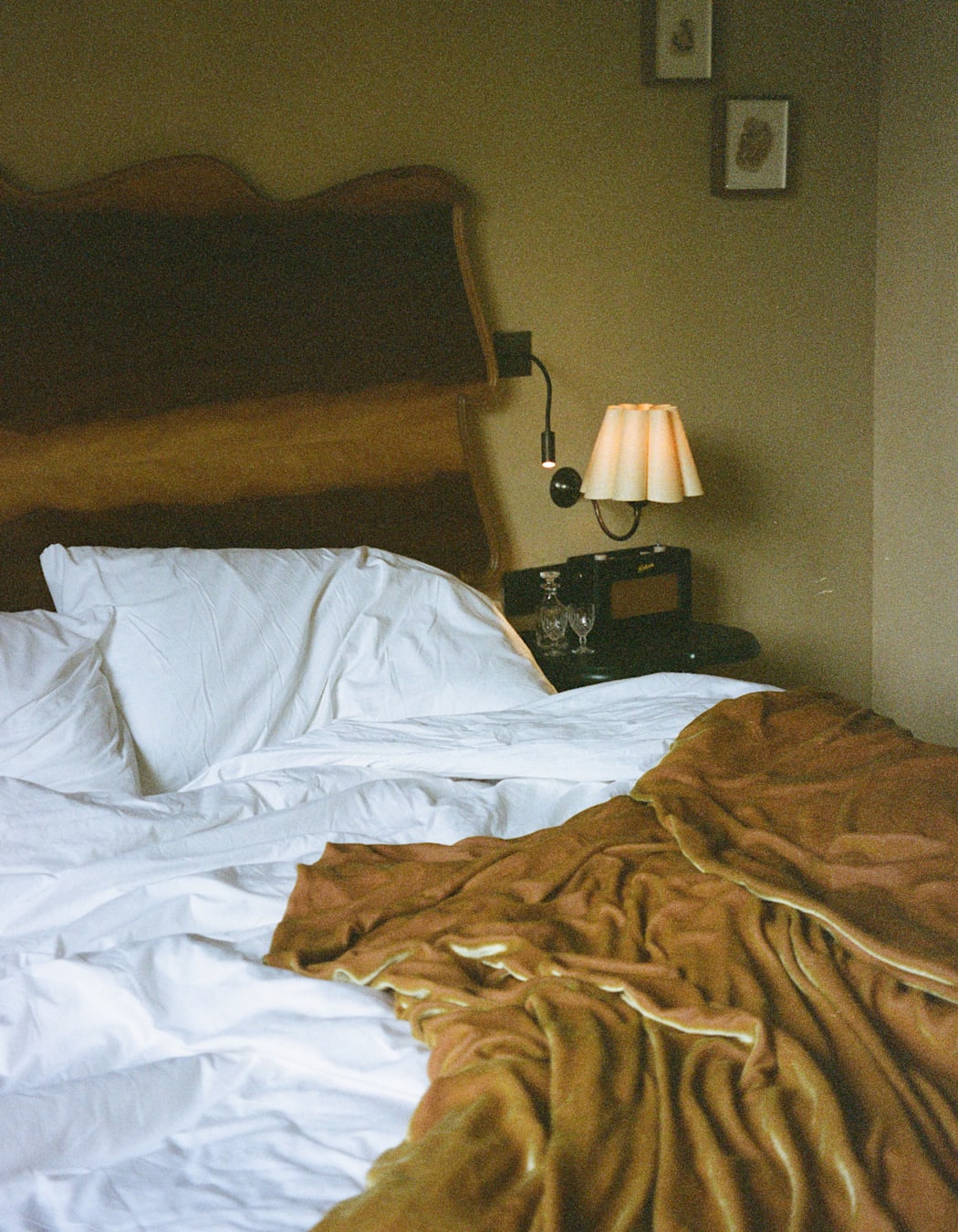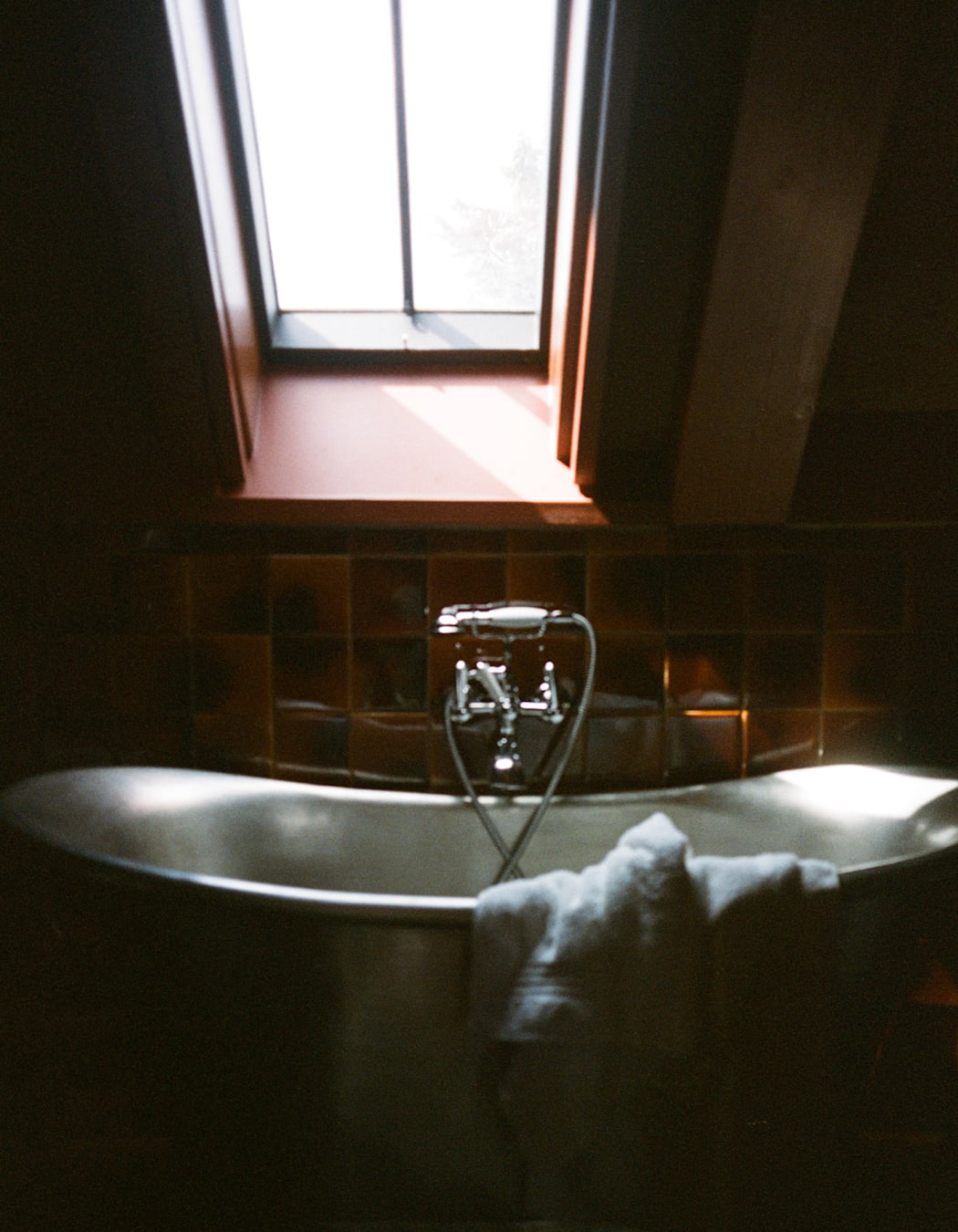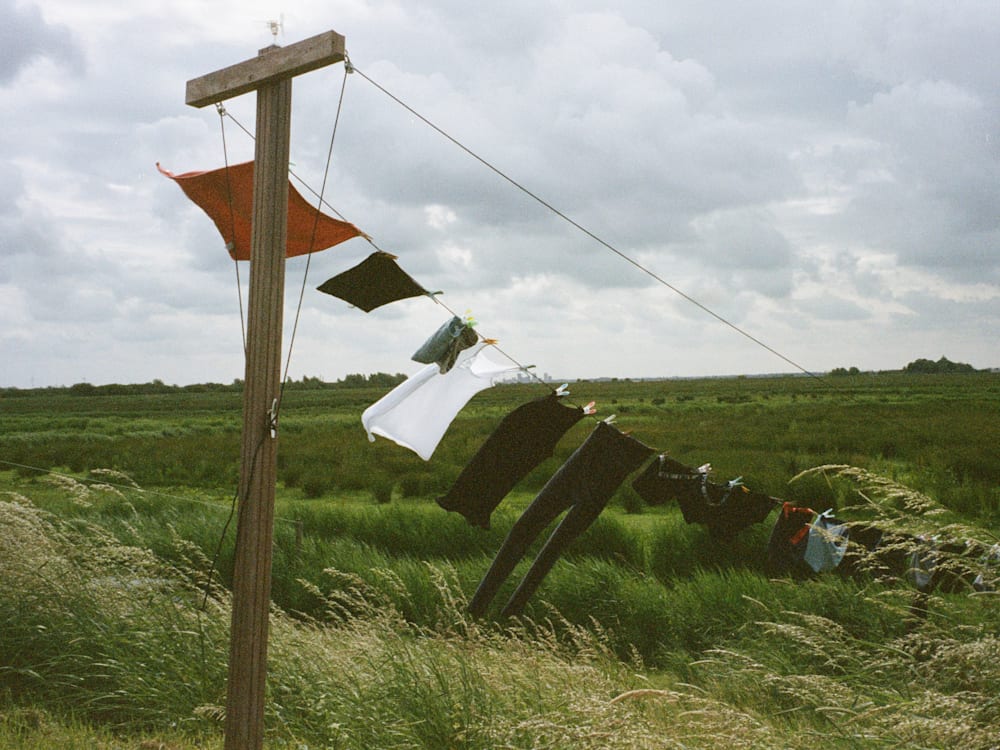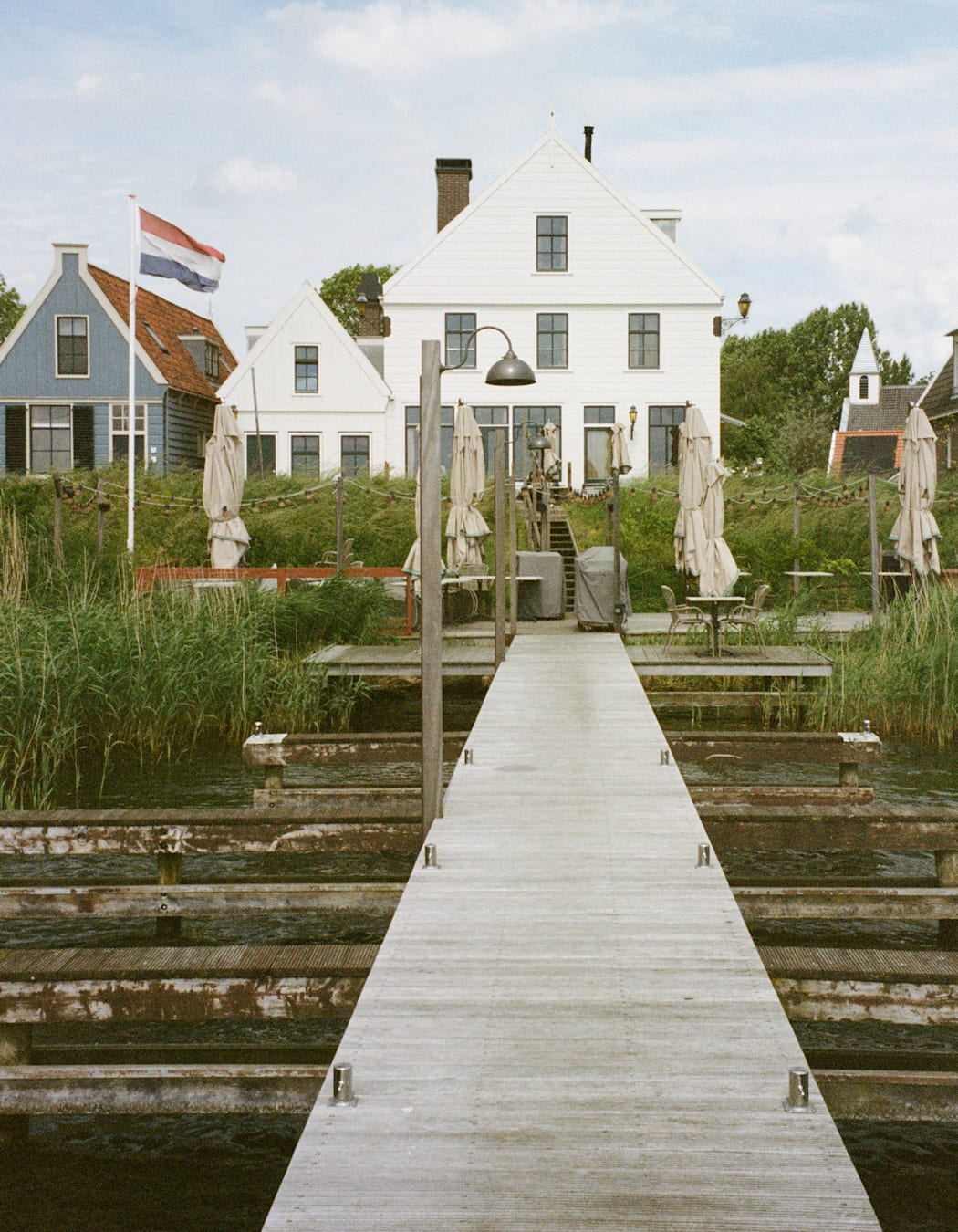At one time, the sleepy Dutch village of Durgerdam would have been a bustling hub of commerce and industry – not that you’d know it now. This rural pocket feels worlds away from any action, despite being just 15 minutes east of central Amsterdam. Sheep and cows graze the meadows behind rows of gabled, clapboard houses. Swans and small boats bob along a glassy lake encircled by swaying tufts of tall grass. Flocks of birds circle above freshly-hung laundry, which flutters to the tolling of church bells. There’s not a whole lot going on, but that’s precisely why I’m here, in pursuit of the city’s sleepy side at De Durgerdam, the hamlet’s namesake hotel.
De Durgerdam hotel
And while Amsterdam’s yawning periphery may be something of a novelty for today’s city-slickers, it’s a side that Rembrandt knew well. The selfie king’s lesser-known landscapes depict pastoral Dutch scenes just like this one. In fact, his lover Geertje Dircx was born five minutes north in Ransdorp, where the artist would frequently visit to sketch the village’s truncated church. Who knows if he ever made it to Durgerdam, but a closer look at his work would suggest so. Here – as in his landscapes – the sky takes on a dual-toned tenor as dusty blue and ochre blend into each other like a sherbet mix. It’s this powdery palette which inspired the hotel’s lounge-cum-restaurant, De Mark, where Mr Smith and I check in just before sunset.
It’s what the Dutch would call ‘gezellig’, a word whose slippery translation lands somewhere between ‘cosy’, ‘convivial’ and ‘fun’. With no dedicated reception, it feels more like rocking-up at a friend’s house than a hotel. We’re ushered straight to the sofa and offered a glass of fizz, joining the ranks of the well-heeled urbanites who are busy nibbling and nattering around vintage wooden tables.

Once a stop on the East India Trading route, the hotel’s 17th-century building originally served as an inn for sailors and fishermen. It remained as such until 1932, when a dam was built in response to recurring flooding. As the ocean became a freshwater lake, fishermen were cut off from their livelihoods. It’s local stories like this one which have been folded into every corner of this sea-faring stay, which has been meticulously madeover by Buro Belén, an Amsterdam-based material research studio who have anchored the hotel’s design in Durgerdam’s nautical heritage. In the lower-ground lounge, for example, a vintage poster implores residents to vote against the dam’s construction, while upstairs, a crystal-studded chandelier resembles a fisherman’s net dripping with tears.
This referential approach continues in the bedrooms where atmospheric lighting and specially made bed throws mimic the dramatic chiaroscuro of a Vermeer still-life, and custom tulipwood headboards with undulating edges imitate the waves which once right outside. Even the colour scheme harks back to the towns heritage, taking its cue from boats and local houses, where function once ruled: terracotta red recalls tree-bark tannins used to make sails waterproof; chalky buttermilk blue used to repel insects; and white, like the hotel’s clapboard façade, to reflect the moonlight, warning passing ships that they were close to shore.

We begin our full day at De Durgerdam with one heaped bowl of homemade granola, one large coffee, and one big question: what would Durgerdammers do? With an illustrated map and two electric bikes, we set out to find our answer. Along the shore, we discover a boat yard, with a friendly dog patrolling its gate. We admire the houses – blue, brown, red and white – where wisps of ruby poppies and blushing tulips are springing up outside. We ride past meadows of lazy cows and herds of sheep, until we reach Melktap en Boerderij Winkel – a rustic, old-world farm shop selling milk, cheese, fruit and vegetables. We leave a few Euros in the honesty box and sit on the bench outside, eating shiny red apples as chickens cluck at our feet. Ahh.
When the rain arrived later that afternoon, we swapped plans for paddleboarding and lakeside bathing in favour of drier pursuits, such as reading by the fire, working through the wine list and admiring the hotel’s vast collection of art works – the latter two personally curated by owner, Paul Geertman. We watch the chefs prep for dinner from behind the open kitchen and take comfort in the smoky aromas wafting through from their open fire. We marvel at lighting designer Ingo Maurer’s poetic interpretation of the IJmeer protests, run our fingers through ‘curtains’ made from deconstructed rope, and admire textured wooden walls where layers of wallpaper have been ripped off.

This material sensitivity and storytelling recreates the allure of a once-beloved maritime inn favoured by sailors and ‘Golden Age’ merchants. And De Durgerdam is an excellent example of how historic buildings can be innovative in their strides toward sustainability, too. During a five-year renovation, the hotel took out the gas to make the building fully electric, and relentlessly experimented to find sensitive but sustainable design solutions. They restored wooden floorboards by repurposing old church pews and replaced the single-paned glass with an insulating alternative that mimics the antique charm of ‘wavy’ glass.
By encouraging material engagement with Durgerdam’s history, guests are able to connect to the area’s unique sense of place. Like seasoned method actors, we find ourselves rapidly accustomed to the village’s slower rhythms, eager to imitate the itineraries of locals. It’s a recipe for success that Amsterdam proper could learn a lot from, as it battles the repercussions of mass tourism. But for now, that feels far, far away.
Ready for the bright lights of the big city? See our collection of central Amsterdam hotels
All photos by the author



